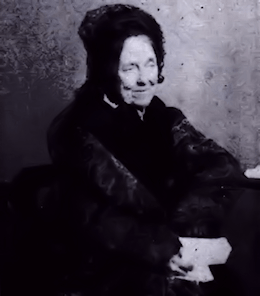Textus Receptus Bibles
Julia E. Smith Translation 1876
| 3:1 | Upon my bed in the night I sought him whom my soul loved: I sought him, and I found him not |
| 3:2 | I will arise now, and I will go round about in the city; in the streets, and in the broad places I will seek him whom my soul loved. I sought him, and I found him not |
| 3:3 | They watching going about in the city, found me: Saw ye him that my soul loved? |
| 3:4 | As a little I passed from them till I found him my soul loved: I held him fast, and I shall not let him go till I brought him into my mother's house, and to the chamber of her conceiving me. |
| 3:5 | I adjured you, O daughters of Jerusalem, by the roes, and by the hinds of the field, if ye shall awake and if ye shall arouse love till he shall desire. |
| 3:6 | Who is this coming up from the desert as columns of smoke of burning incense, of myrrh and frankincense from all the powder of the trader. |
| 3:7 | Behold his bed of Solomon: sixty strong ones round about it from the strong ones of Israel. |
| 3:8 | All of them holding the sword, being trained to war: each his sword upon his thigh from terror in the night |
| 3:9 | King Solomon made for himself a litter from the woods of Lebanon. |
| 3:10 | Its pillars he made silver, its support gold, its seat reddish purple, its midst tesselated with love from the daughters of Jerusalem. |
| 3:11 | Go forth, ye daughters of Zion, and look upon king Solomon; upon the crown his mother crowned to him in the day of his espousals, and in the day of the gladness of his heart |

Julia E. Smith Translation 1876
The Julia Evelina Smith Parker Translation is considered the first complete translation of the Bible into English by a woman. The Bible was titled The Holy Bible: Containing the Old and New Testaments; Translated Literally from the Original Tongues, and was published in 1876.
Julia Smith, of Glastonbury, Connecticut had a working knowledge of Latin, Greek and Hebrew. Her father had been a Congregationalist minister before he became a lawyer. Having read the Bible in its original languages, she set about creating her own translation, which she completed in 1855, after a number of drafts. The work is a strictly literal rendering, always translating a Greek or Hebrew word with the same word wherever possible. Smith accomplished this work on her own in the span of eight years (1847 to 1855). She had sought out no help in the venture, even writing, "I do not see that anybody can know more about it than I do." Smith's insistence on complete literalness, plus an effort to translate each original word with the same English word, combined with an odd notion of Hebrew tenses (often translating the Hebrew imperfect tense with the English future) results in a translation that is mechanical and often nonsensical. However, such a translation if overly literal might be valuable to consult in checking the meaning of some individual verse. One notable feature of this translation was the prominent use of the Divine Name, Jehovah, throughout the Old Testament of this Bible version.
In 1876, at 84 years of age some 21 years after completing her work, she finally sought publication. The publication costs ($4,000) were personally funded by Julia and her sister Abby Smith. The 1,000 copies printed were offered for $2.50 each, but her household auction in 1884 sold about 50 remaining copies.
The translation fell into obscurity as it was for the most part too literal and lacked any flow. For example, Jer. 22:23 was given as follows: "Thou dwelling in Lebanon, building as nest in the cedars, how being compassionated in pangs coming to thee the pain as in her bringing forth." However, the translation was the only Contemporary English translation out of the original languages available to English readers until the publication of The British Revised Version in 1881-1894.(The New testament was published in 1881, the Old in 1884, and the Apocrypha in 1894.) This makes it an invaluable Bible for its period.